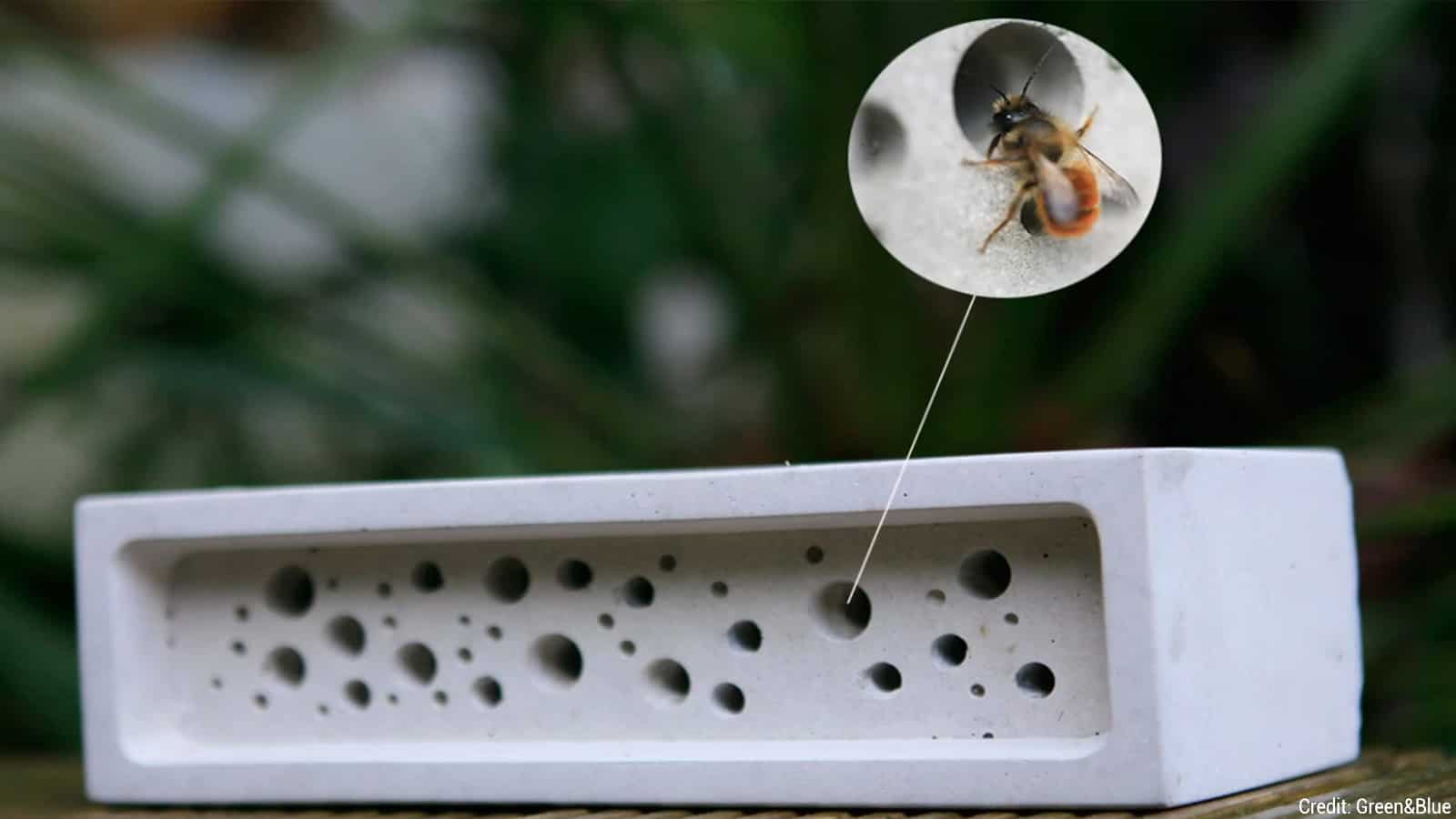In Brighton, England, the council passed a mandate that new buildings use “bee bricks” to help the bee population recover. Bees have been dying at record rates globally due to pollution, pesticides, habitat destruction, and climate change. However, considering nature when constructing our cities could help them come back.
In Brighton, the construction initiative would include new buildings taller than five meters. The bee bricks look like blocks of Swiss cheese with many small holes to create homes for nesting bees. These offer an ideal habitat for 250 of the 270 bee species known as solitary bees in Britain.
As the name suggests, they like to nest alone, often building their homes in the ground. Some, however, prefer to seek out small holes in buildings for their shelter.
Sadly, the bee population in the UK has been rapidly declining since the 1970s. Between 1985 and 2005, honeybee hives have reduced by 50%, and since 1900, 13 bee species have gone extinct. 35 more face the threat of extinction this century due to environmental pressures.
Planting flowers rich in nectar can help bee populations recover. But in dense cities, this isn’t always an option. Bee bricks offer a solution that allows bees and humans to coexist in urban areas.
“Bee bricks are just one of quite a number of measures that really should be in place to address biodiversity concerns that have arisen through years of neglect of the natural environment,” said Robert Nemeth, the town councilor behind the initiative first proposed in 2019.
UK City Finds Ways to Help Restore the Declining Native Bee Population
However, some experts believe the bee bricks may do more harm than good. Some have said the holes aren’t big enough to support a nest and that the bricks won’t help bee populations recover. Others say the bricks may attract mites or parasites and require regular cleaning to prevent disease spread.
Luckily, some studies have found that bees nest in bee bricks with holes as small as 5-8mm wide and 70-80mm deep. Some scientists say bees will naturally avoid dangerous nesting areas as far as the mites. They added that the mites would leave after a couple of seasons, and the bricks wouldn’t need cleaning because of beneficial microbes.
Lars Chittka, a professor in sensory and behavioral ecology at Queen Mary University, told The Guardian that bees “naturally possess hygienic behavior that would allow them to mitigate the risks at least to some extent, or that they would assess the holes’ states before using them, which should to some extent counterbalance the risks that come with such long-term nesting opportunities.”
Of course, it will take a few years of studying the bee bricks to determine their effectiveness. However, it’s encouraging those city councils are beginning to consider biodiversity in their building initiatives.
In addition to the bee bricks, the Brighton city council also included “swift bricks” in the mandate. The bricks have a larger hole in them to provide a habitat for nesting birds, such as swifts. Before migrating to Africa, these tiny birds spend a few months in the UK per year. The government consulted the Royal Society for the Protection of Birds to determine ideal placement for the swift bricks.
How You Can Help Bee Populations Flourish
If you’re inspired by the UK’s initiative to help declining bee populations, you can also participate in their recovery. In addition to considering bee bricks in the construction of new homes and offices, you can encourage bee recovery by planting a garden. This act of kindness benefits us since bees are responsible for one in every three bites of food we eat. Simply put, we need bees to survive, so it’s in our best interest to give them a healthy habitat.
To plant a pollinator garden in your backyard, follow these tips:
- Make sure to plant only native or non-invasive species. Most pollinators have adapted to feed on specific plants native to their environment. As a bonus, local plants usually require less water than ornamentals.
- Encourage diversity in your garden. If we want thriving bee populations, it’s essential to ensure they access abundant pollen and nectar. A beautiful garden teeming with life will attract more bees to your backyard.
- Choose flowers that bloom throughout the growing season and plant large patches to better foraging.
- Plant various species to attract not just bees but other pollinators like butterflies! Monarchs have made an enormous comeback recently, and perhaps the rise in backyard gardens played a role.
- Don’t use pesticides or insecticides since these chemical poisons can kill pollinators. If you have a biodiverse garden, animals will naturally help manage pests.
- Keep areas of sunny, bare soil since bees often like to nest underground.
- Leave small branches, hollow twigs, rotted logs or tree stumps, and decaying plant material in your garden. These also make lovely homes for nesting bees.
As we evolve as a species, we’ve realized the importance of coexisting with nature. After all, we’re dependent on Earth for our survival, so we should tread lightly and take care of our home. Since we rely on bees for much of our food, it’s essential to protect them from environmental threats. Luckily, it seems we’re turning things around and taking steps to restore nature in all its beauty.
Final Thoughts on How Bee Bricks are Restoring Bee Populations
In the UK, the city council decided to mandate that all new buildings taller than 5 meters must have bee bricks. These bricks have small holes bored in them that allow bees to nest. In addition, they will install swift bricks in buildings to provide habitats for tiny birds such as swifts. These initiatives offer hope for our world and show what we can accomplish by helping nature thrive.
Even though the world seems chaotic and turbulent, we’re making great strides to heal our planet. As we leave behind destructive ways of living, we’re ushering in a new, exciting era of compassion and restoration. And we can all take part in this paradigm shift.
















 Community
Community

